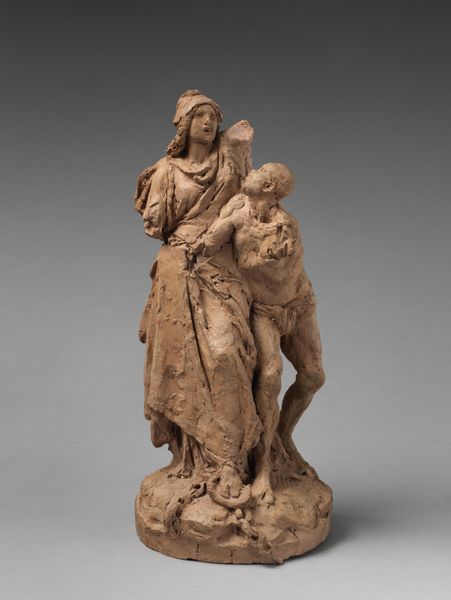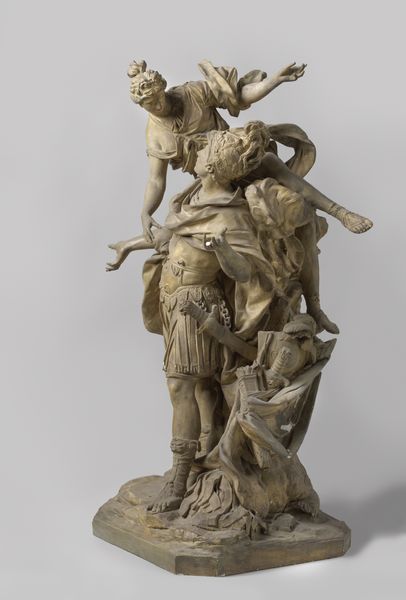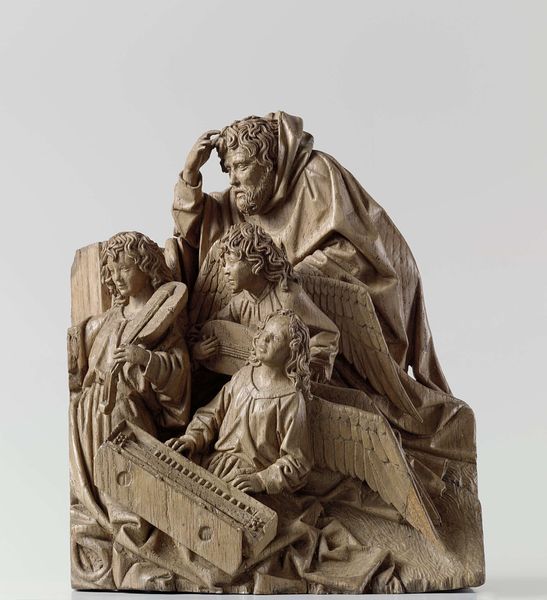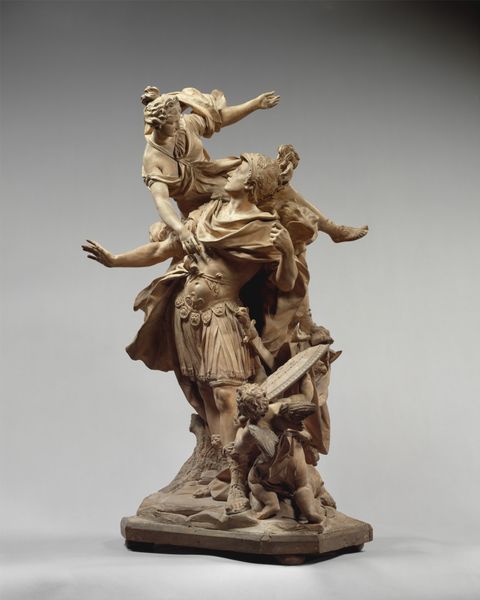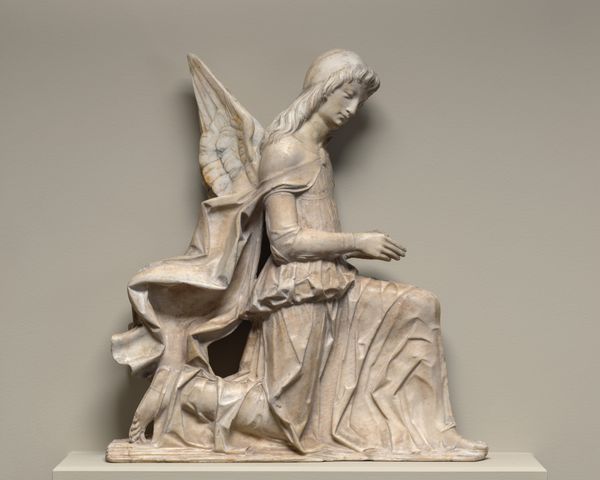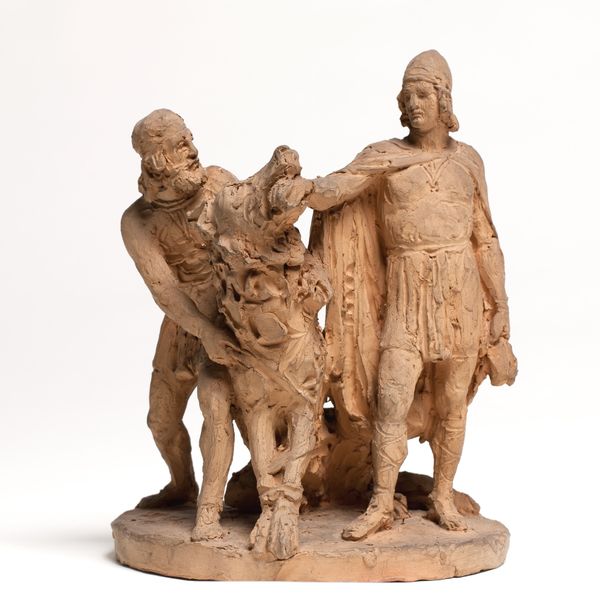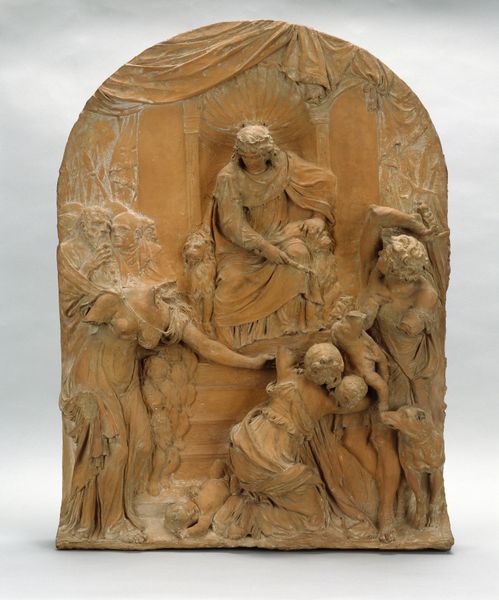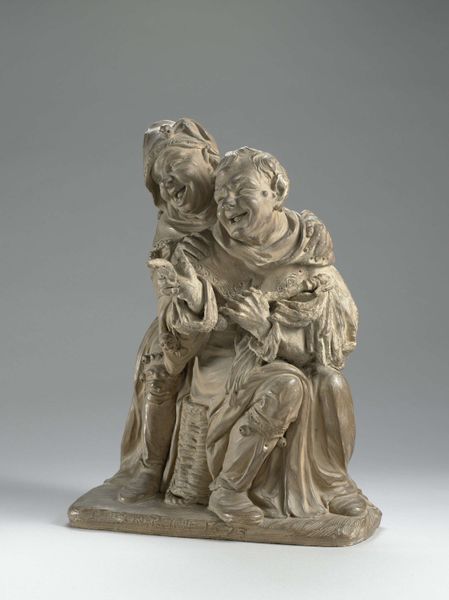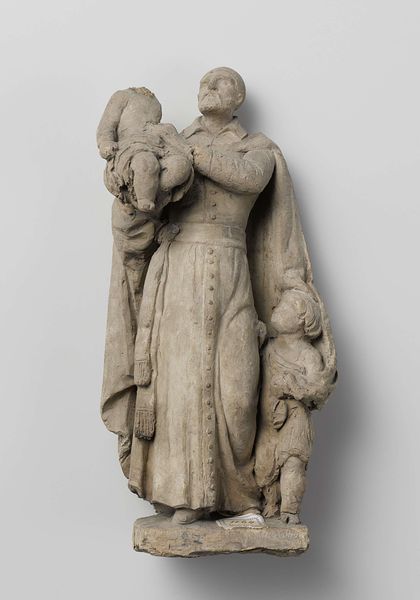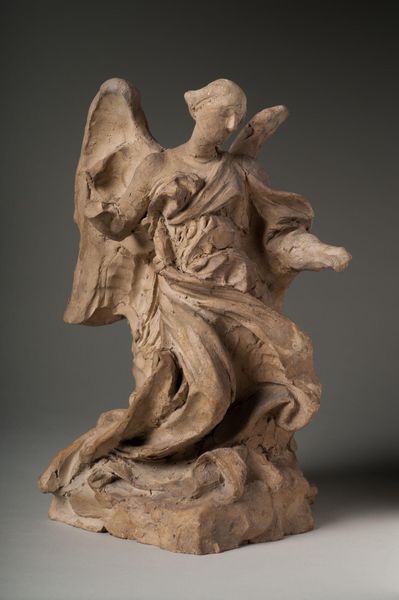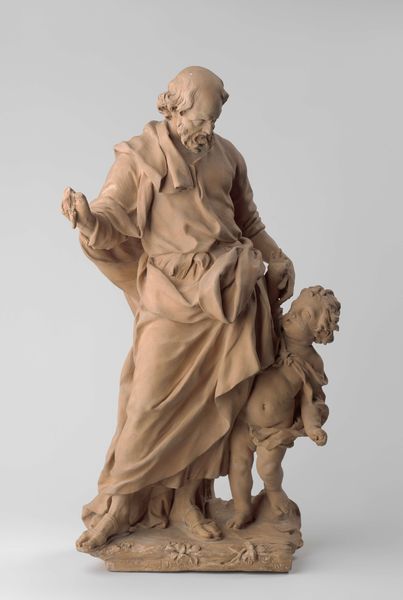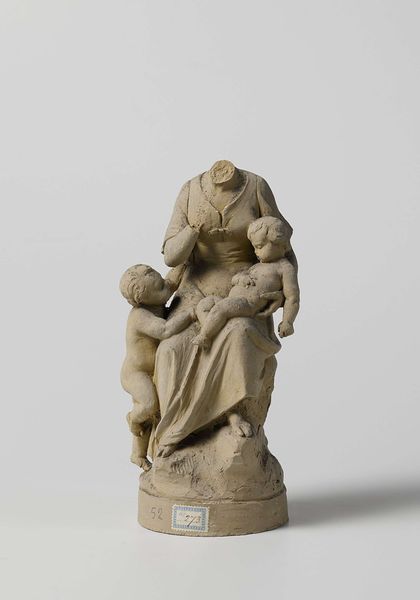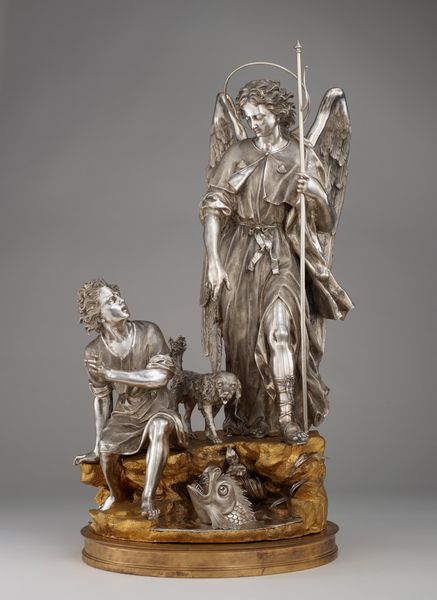
carving, sculpture, wood
#
medieval
#
carving
#
sculpture
#
figuration
#
sculpture
#
wood
#
history-painting
#
northern-renaissance
Dimensions: height 58.5 cm, width 43.5 cm, depth 11.5 cm, height 78.8 cm, width 90.2 cm, depth 19.0 cm
Copyright: Rijks Museum: Open Domain
Curator: The Rijksmuseum houses a remarkable artwork titled "Three Horsemen from a Calvary" carved in wood around 1470-1473 by Adriaen van Wesel. Editor: It's striking, the texture of the wood retains so much detail, the horses seem frozen, mid-trot, the carving imparts an almost urgent, weighty feel, like a captured moment of deep anxiety. Curator: That sense of weight definitely reflects the religious intensity of the period, you see, these sculptures played a key role in medieval religious devotion. They were often part of larger altarpieces, bringing biblical stories to life for largely illiterate populations. Wesel’s skill lay in crafting emotional and relatable scenes that would resonate with viewers. Editor: It is a rather odd assembly. The riders and the horses all seem independent, look at the formal positioning of the riders. See the folds in the cloth of the riders are rendered so realistically, the sculptor clearly relished texture and line. Curator: Precisely, though the formal elements also speak to a wider cultural context. Northern Renaissance art was moving away from strictly religious symbolism towards a greater emphasis on humanism, even within religious scenes. Editor: It's there in the faces, too. The features on each of the horsemen— despite the obvious constraints presented by the medium— communicate the drama in a singular fashion. Their expressions imply deep consternation, as though facing an oncoming cataclysm. Curator: Exactly, the horsemen likely were Roman soldiers depicted in the moment just before or after the crucifixion. They’re meant to evoke the moral conflict and societal upheaval surrounding the central event of Christianity, which had tremendous political and social ramifications for the contemporary audience, Editor: So, looking closely reveals not just exquisite technical skill, but a profound moment rendered to ignite deep, meaningful consideration and reflection among its viewers. Curator: Absolutely, Van Wesel presents a pivotal point in human history while simultaneously providing tangible social context to the medieval audience.
Comments
No comments
Be the first to comment and join the conversation on the ultimate creative platform.
